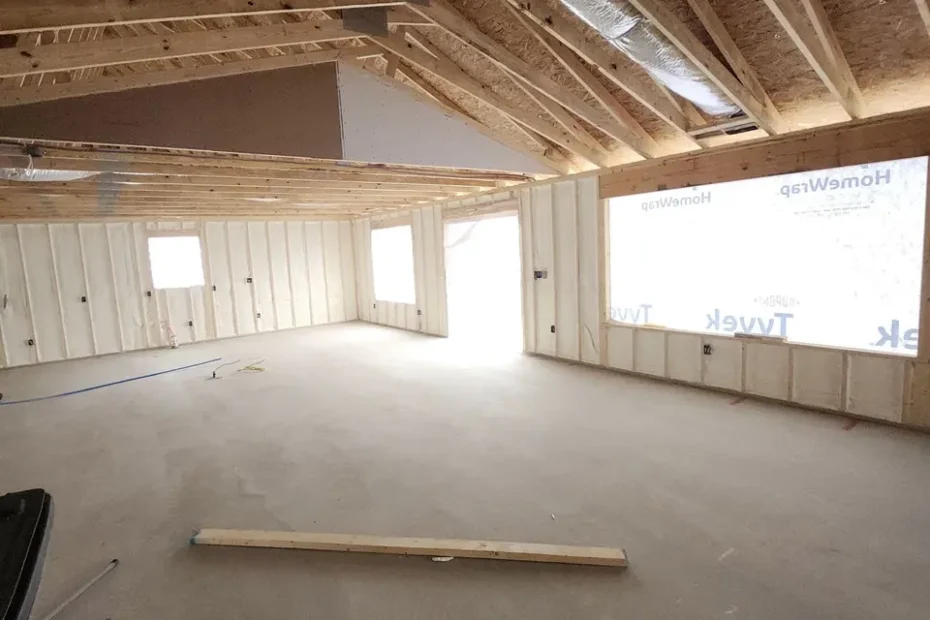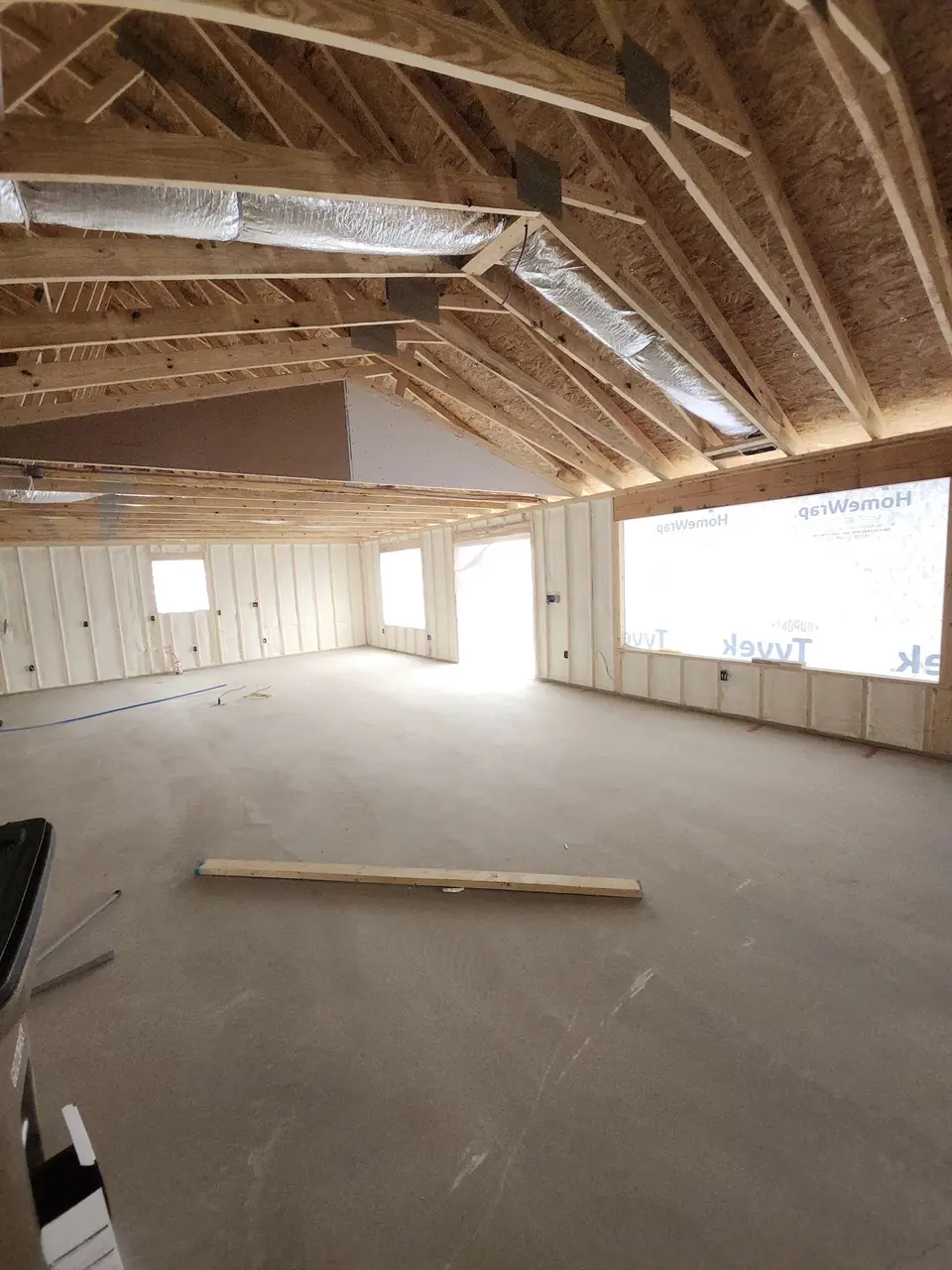Proper insulation is crucial for the comfort and energy efficiency of your home. Over time, various factors can lead to a decline in insulation performance. In this blog, we will explore the key indicators that signal it’s time to consider an insulation upgrade. From rising energy bills to uncomfortable temperature fluctuations, recognizing these signs can help you maintain a cozy and cost-effective living space.
1. Unexpected High Energy Bills
If you’ve recently opened your energy bill and experienced a jolt of shock, it might be time to investigate the insulation in your home. Unexpected high energy bills can be one of the clearest signs that your insulation is underperforming. When insulation is not effectively keeping the heat in during winter or the cool air in during summer, your heating and cooling systems work overtime. This not only leads to increased energy consumption but also inflates your utility costs. Consider tracking your energy bills over a few months; if you notice a significant increase without a change in usage, dialing into your insulation situation is crucial.
Moreover, it’s worth investigating whether your insulation is truly providing the barrier it’s meant for. An insulation upgrade can drastically cut down those soaring bills by minimizing the energy loss. You might be tempted to chalk it up to seasonal fluctuations, but consistent high bills indicate a persistent issue. This lack of efficiency could be weighing down your budget more than you realize. As you ponder this, keep in mind that the long-term savings from upgrading your insulation will not only help balance your monthly budget but align with a more sustainable energy approach.
2. Inconsistent Room Temperatures
Inconsistent room temperatures can create a frustrating living experience. It’s unsettling when one room feels like a cozy retreat while another resembles a brisk tundra. These temperature disparities often stem from problematic insulation. Areas with insufficient insulation allow drafts to seep in or conditioned air to escape, resulting in uneven heating and cooling throughout your home. Not only does this make your living space less comfortable, but it also hints at an underlying issue that could benefit from an insulation upgrade.
To further assess the situation, pay attention to which rooms are affected. Are bedrooms notoriously colder? Is the living room often too warm? Pinpointing these areas can help in addressing the necessary upgrades. You might also consider conducting a simple test—with a candle or incense stick, check for drafts near windows or walls. If the flame flickers, it’s a clear sign that air is escaping, indicating that your insulation may require immediate attention. Don’t let these inconsistent temperatures disrupt your peace; addressing this can lead to a much more harmonious and comfortable home environment.
3. Drafts and Cold Spots
Drafts and cold spots are not just a minor annoyance; they signify that your home might be losing valuable heat or cool air. Feeling a sudden chill while sitting in your living room or experiencing cold spots in your hallway is a glaring invitation to consider an insulation upgrade. These drafts, often caused by gaps or deterioration in existing insulation, can leave you feeling uncomfortable and prompt you to crank up the thermostat. But increasing the temperature is merely a temporary fix to a more systemic problem.
A quick inspection can help you identify problematic areas. Walk around your home and take note of where the air feels colder than it should, especially near windows, doors, and exterior walls. You might find that adding insulation in these areas not only eliminates those cold drafts but also improves your overall energy efficiency. Investing in quality insulation upgrades can provide a long-term solution, making your home warmer and more inviting all year round.
4. Age of Your Current Insulation
Every good homeowner should be aware of the age of their insulation materials. Just like any component of your home, insulation has a lifespan, and many types of insulation materials degrade over time. If your insulation is over 15-20 years old, it’s likely not performing at its best. You may be shocked to discover that older materials can become compacted or insufficient in their thermal resistance, leading to inefficiencies that cost you in comfort and energy savings. An insulation upgrade can remedy many of these issues, ensuring that your home remains a bastion of comfort.
Regular maintenance and evaluations of your insulation can help you catch problems before they escalate. Evaluate and compare your insulation’s age to the expansion of your home; if you’ve added square footage or renovated, older insulation may not be sufficient for the new layout. Consider integrating newer, more efficient insulation types into your upgrade plan. By doing so, you not only bring your home up to current standards but significantly enhance your comfort and decrease energy costs moving forward.
5. Deterioration of Insulation Materials
The physical condition of your insulation materials is another critical factor to consider. Regardless of age, external factors like moisture and pests can lead to the deterioration of insulation performance. If you’ve noticed sagging, mold growth, or even discoloration in your insulation, these are clear indicators that an insulation upgrade is necessary. Foundation leaks, humidity, and critters can wreak havoc on insulation, rendering it ineffective and compromising your home’s integrity.
Addressing these deterioration signs swiftly can save you from larger issues down the road. For instance, mold not only reduces insulation efficacy but can also pose health risks to your family. Inspecting your insulation regularly—particularly after heavy storms or pest infestations—can help catch deterioration early. An insulation upgrade can help replace worn-out materials with better options that are resistant to moisture and pests, ensuring a safer and more comfortable environment for you and your family.
6. Excessive Noise from Outside
Experiencing excessive noise from outside can be extremely disruptive, affecting your peace within your home. If you’ve noticed that the tranquility of your living space is being interrupted by the hustle and bustle of the outside world, it may be time for an insulation upgrade. Quality insulation provides not only thermal control but also soundproofing properties, dampening unwanted sounds from entering your home. If you find yourself frequently cranking up the volume on your TV or struggling to hold conversations over the clamor outside, look to your insulation as a potential culprit.
Identifying where the noise is entering your home can guide your next steps. Areas such as walls adjoining busy streets or windows that are thin can often be key points of escape for sound. Upgrading your insulation can create a more serene atmosphere, significantly enhancing your quality of life. Choosing insulation materials designed with sound control in mind can lead to a noticeable difference in how much outside noise permeates your living space.
7. Increased Humidity Levels Indoors
If you’ve started to notice increased humidity levels indoors, you could be experiencing a moisture problem that relates back to your insulation. Poor insulation can allow moisture to seep in, leading to a rise in humidity that not only makes your home feel uncomfortable but also contributes to potential health issues like mold growth. Be vigilant about moisture levels; if it feels muggy or you notice condensation forming on windows, it’s a case for an insulation upgrade.
Taking proactive measures can help mitigate these humidity issues before they escalate. Offering a balance to both temperature and moisture control, a quality insulation upgrade can improve the overall climate of your home, creating a healthier environment. By ensuring that your insulation is performing optimally, you can better maintain humidity levels within a comfortable range, safeguarding against the numerous downsides of excessive moisture.
8. Pest Infestations in Insulation Areas
Finding pests residing in your insulation areas is more than just a nuisance; it might indicate that your insulation is more than past due for an upgrade. Pests such as rodents and insects are notorious for invading poorly insulated homes. They seek warmth and shelter, making your home an attractive option if your insulation is lacking. If you’ve spotted signs of a pest infestation, it may serve as a crucial reminder that an insulation upgrade is vital not just for comfort but for safety.
Furthermore, it’s important to recognize that the presence of pests can lead to additional insulation damage, creating a vicious cycle. Beyond simply removing pests, investing in effective insulation solutions can deter their future return. Using pest-resistant materials during your insulation upgrade will lay down a necessary foundation to protect your house from further infestations. Being proactive can save you time, stress, and many potential costs associated with pest control.

